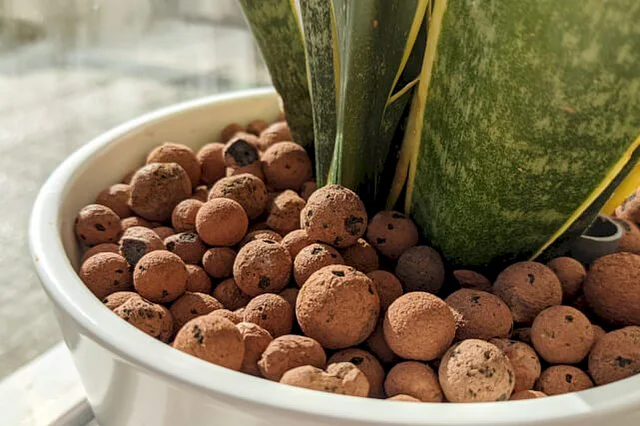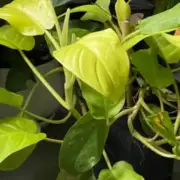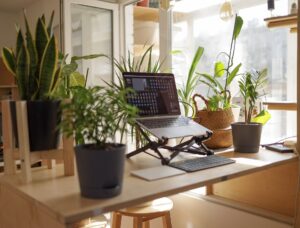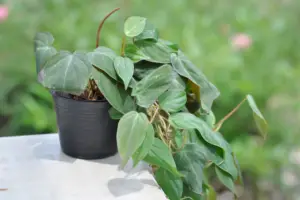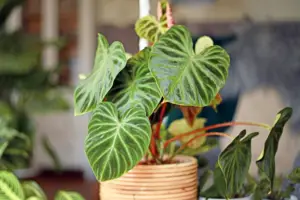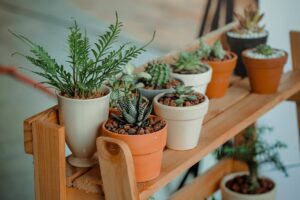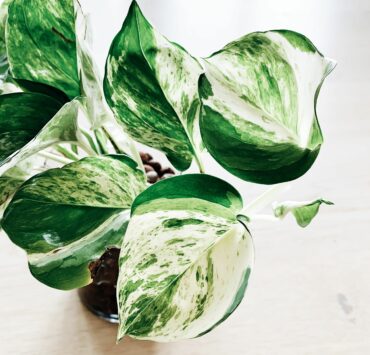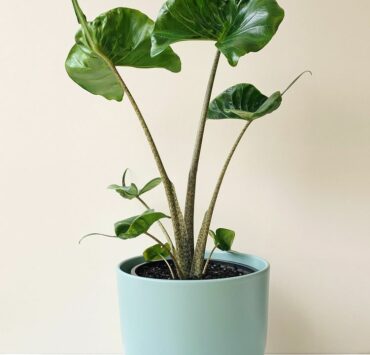LECA, an acronym for lightweight expanded clay aggregate, seems to have a moment with houseplant enthusiasts. They’re essentially baked leca clay balls that take the place of soil as a growing medium for your beloved plants. Here, we delve into how LECA works and why it’s a fantastic soil alternative to help you decide whether or not you want to use it for your beloved indoor plants.
How LECA Balls Work?
LECA balls are a growing medium for plants. They act as a timed and extended-release watering medium for your plants, ensuring that it gets all the water and nutrients it needs when it needs it.
The balls pile on top of each other, accommodating plant roots. This provides the right amount of water and ensures good oxygen flow throughout the roots and the proper support and stability to prevent your plant from falling over as it grows.
LECA takes care of the water and oxygen for your plants, but you need to pair them with fertilizer to create the right growing environment a plant needs to thrive. LECA in itself doesn’t provide nutrients for your plant, so you need to add fertilizer to the water. A general hydroponics fertilizer will do the trick, but more demanding plants may require additional nutrients and other growth boosters such as growth hormones.
Plants that grow on LECA need to be potted in a non-draining pot to retain all the water and fertilizer.
Why Use LECA Balls?
1. LECA Balls Lets Your Plant Absorb Water As Needed
Many well-meaning plant lovers will have had plants succumb to root rot due to overwatering or wither away due to underwatering.
LECA balls are great for over-watering and under-watering plant owners alike. The LECA balls will hold water for your plant’s roots to absorb instead of directly absorbing the water. This means that plants absorb water as needed instead of absorbing the amount of water given.
Having the LECA balls absorb the water before the plant roots dramatically reduces the chance of dreaded root rot. Additionally, you only need to rewater the balls every 2-3 weeks, making watering a more manageable task.
2. LECA Doesn’t Attract Or Harbor Pests
LECA doesn’t give an environment for pests to thrive in because it doesn’t contain any live organisms to feed on. Where there’s soil, you risk growing and harboring soil pests, fungus gnats, and aphids. This can virtually eliminate plant pests in your home.
3. LECA Is Suitable For Any Plant
Plants are undoubtedly a gorgeous addition to any home. They instantly brighten up the space, and its natural beauty carries over into any area it occupies. Many plant lovers will agree more is more.
However, various housing plants can become tedious as you’ll soon realize that you need to meet their different needs to keep them alive. Fiddle Leaf Fig that loves its peat-based soil to a Travelers Palm preference for sandy clay-based soil.
A general potting mix to sustain your less demanding plants such as Rubber Trees and Monsteras, keeping tabs on what type of soil and ratios your plant likes can make plant care more complicated than you’d wish.
LECA works for virtually every plant, making it a fantastic alternative that takes the guesswork out of what type of soil mix your plant will thrive on.
LECA being suitable for most plants, creates the perfect segway for why you should use LECA balls over soil…
4. LECA Takes Up Less Space
Forget storing bags and bags of different types of soil. Not everyone has the luxury of storage space for soil, especially if you have to keep multiple soil types for other plants. LECA balls range from 0.1 to 25mm in diameter when dry and expand when soaked in water before you’re ready to use them, making them more space efficient than soil.
5. LECA Isn’t Messy
Except for the dust that emits from a fresh bag of LECA, once the balls have absorbed water, LECA balls create virtually zero mess. Unlike soil that harbors pests, can spill, and leave marks on surfaces, LECA is a much neater option.
If you decide to use LECA, preparation is straightforward and not messy. You’ll need to rinse it off from dust and soak it in water for up to two days before using it on your plants.
6. LECA Balls Are Reusable
LECA balls will feed and nourish your plant indefinitely when the right fertilizer is placed and absorbed by it. Unlike soil that will become devoid of nutrients if you don’t tend to it, LECA clay balls keep your plant nourished for days because every watering session is also a fertilizing session. Any changes you need to make with LECA for your plant’s health is simply moving it to a bigger pot to accommodate your growing plant.
You Can More Easily Tell How Healthy Your Plant Is
Most plant lovers have been there. One day your plant is bright, green, and thriving, then seemingly overnight, the leaves droop and fall off uncontrollably until you’re left with a shriveled stem. It’s hard to tell what went wrong. Plants can die from opposite ends of the care spectrum. They’ve been over-watered or under-watered; they got too much sun, they got too little sun. They were repotted too late, they were repotted too early.
A plant’s health begins to deteriorate long before showing any visible signs. This is why reversing problems that have already manifested visibly is difficult. Problems usually start at the roots, which is especially difficult to detect for plants potted in soil.
LECA helps to take out the guesswork of your plant’s health because you can more easily see the roots if you take it out of its pot. The clay balls leave a lot of air pockets, allowing more oxygen to circulate around the roots and giving you a clear picture of what’s happening beneath the surface. Issues like the beginnings of root rot can quickly be remedied.
Additionally, if you want to know how your plant’s root system looks, LECA balls are aesthetic and look great in a clear pot.
Which Plants Like LECA Balls?
If you have an otherwise healthy plant potted in the soil, we suggest leaving it alone. Plants grown in soil have root systems that differ from plant roots grown in water. Any sudden and total change in environment for a plant’s roots can be very harsh, especially for larger and older plants that have adapted to their current environment.
If you want to transition or start using LECA balls, we suggest using younger plants with a less established root system or cuttings from plants you wish to propagate.
Can You Mix LECA Balls with Soil?
Yes, you definitely can combine LECA balls with soil. LECA balls are more expensive than soil, retailing at $10 to $30 per pound, so if you want its benefits without having to fill up all your pots with LECA balls, combining it with soil works well.
To use LECA balls and soil in a non-draining pot, place the LECA balls at the bottom and top layers of plants, with soil in between. The bottle layer will absorb any excess water that could otherwise cause root rot, and the top layer will act as a deterrent for pests to manifest.
LECA balls are a clean, low-maintenance soil alternative indoor plant owners should consider. If you’re willing to spend a few extra bucks for LECA balls, you get healthier plants that are easier to take care of.
